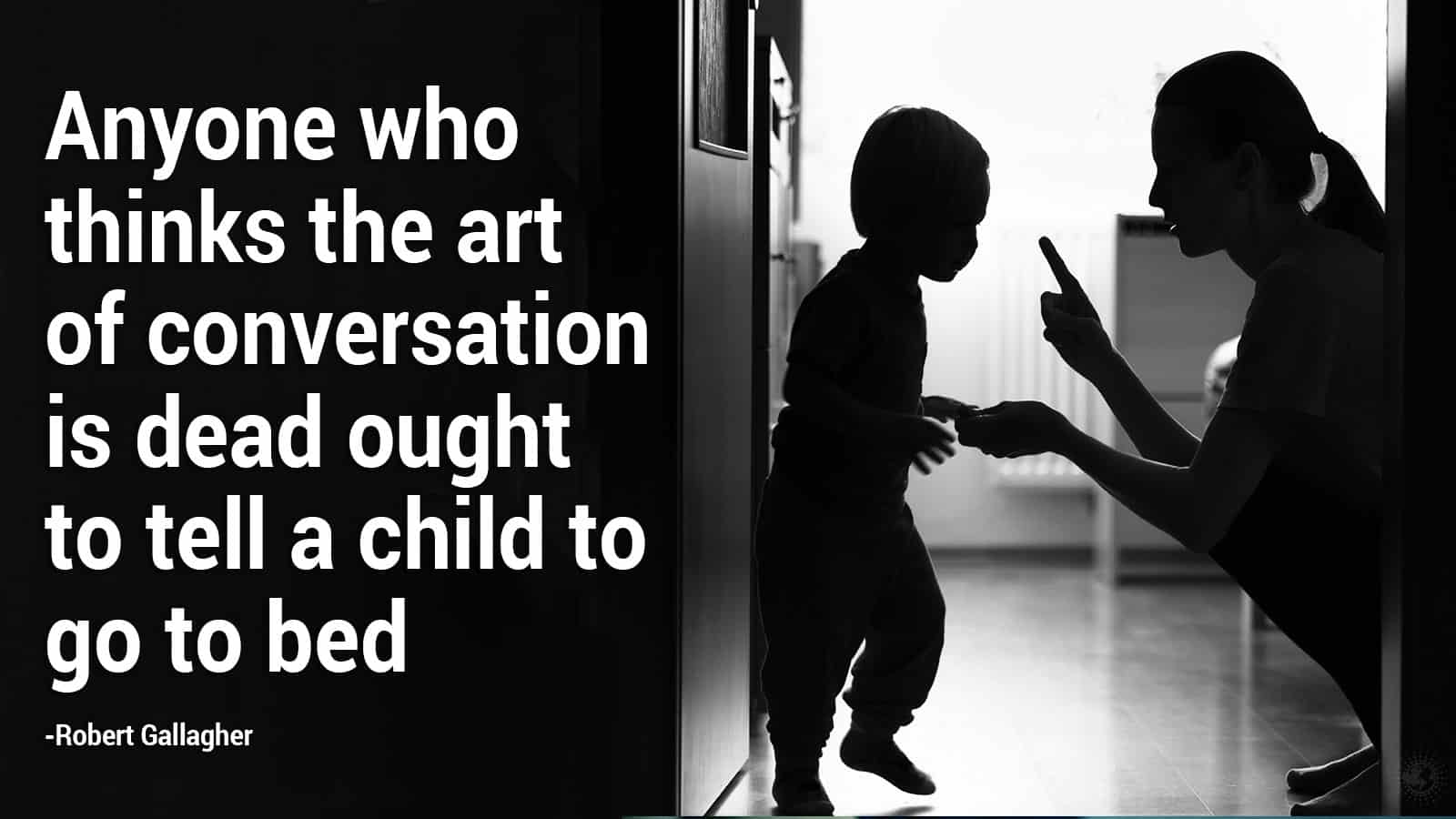When you tell your child no, and they keep asking, you might feel like you’re losing your mind. Toddlers know how to whine before they have an extensive vocabulary, and the behavior can continue for years. Whining is so common that many parents can predict when their child will do it and what it will be about.
Kids of all ages nag and beg to get what they want. Even when the child becomes a teenager, the sound of their whining is still an unbearable noise for most people. However, you can put an end to a child’s nagging right now, no matter how old they are.
You may have already tried giving time-outs and warnings, but the behavior doesn’t end. At some point, you might want to give in and allow your child to have their way. However, every time they nag and get what they want, they learn that their negative behavior works.
Asking your child to stop begging or expressing annoyance won’t solve the problem. However, there is a 3-step trick that can make all the difference and put an end to the behavior. This simple trick requires nothing more than consistency and discipline, so it’s easy to implement right away.
Understanding Why Kids Nag
Before you can stop your child’s whining, you must understand why they do it. Your child isn’t only trying to annoy you as there is often an underlying reason for their behavior.
Psychologists discovered that every human must experience belonging and significance in life. If those needs aren’t met in a child’s life, they will likely start acting out by whining to get attention. However, this reason isn’t the only cause of the negative behavior.
Many kids express themselves by nagging because they haven’t learned a better way to get their point across. They must learn positive and productive ways to communicate.
Parents are busy enough as it is, making it hard to give positive communication as often as they’d like. However, you must find a way to take the time to teach your child and help them grow. When they don’t receive this attention and learn to communicate appropriately, it results in tantrums and nagging.
Even when you respond to your child’s negative behavior with a correction or scolding, they receive the attention they are seeking. It results in the child believing that their behavior worked, making them want to repeat it. Kids always continue behaviors that work to get them what they want.
Now that you understand why kids whine, you can stop the behavior. Don’t give in when they annoy you because it rewards their behavior. Instead, try this simple 3-step trick to teach them to do better.
The Trick That Stops Children from Whining Instantly
When your child nags, you must ensure you don’t give in. You can’t let the behavior work for them, or they’ll continue to act out. As soon as a child realizes whining won’t work, they’ll cut back on how often they try.
You might think it’s easier to give in when you’re in public, but even then, you must stay firm. Once you say no, stick to your original answer. The child must learn that tantrums and begging won’t get them what they want.
You can still help your child with their feelings, but giving in is not the way to go. Instead, try this 3-step method that can help kids of any age.
Step 1 – Tell Them What You Expect
Children behave better when they know what to expect, but you’ll want to set the expectation during a calm moment. Explain to your child that they are growing up and are big enough to ask for what they want without nagging. You’ll also want to explain that they’ll be okay if they don’t get their way and that begging won’t help.
Explain to your child that if they use a whiny voice, you will put your hands over your ears as a reminder. Each time they see you put your hands over your ears, it’s a hint that they should use a regular voice. Make it clear that if they use their normal voice, you’ll talk with them about what’s on their mind.
Some kids might need examples of a normal voice and a whiny voice. If so, do some role-playing so that they understand your expectations.
Step 2 – Explain That You Won’t Respond to Begging or Whining
Tell your child that you won’t respond at all if placing your hands over your ears doesn’t prompt a normal voice. Make sure that your child knows you’ll keep doing whatever it is you were working on and pretend you don’t hear their whiny voice. Don’t forget to explain that as soon as they choose to use a regular voice, you’ll be happy to have a discussion.
Step 3 – Confirm That Your Child Understands
Once you’ve told your child what to expect from you, make sure they understand. You can ask questions to ensure they know what will happen, and you can even role play.
With your child, practice how to talk to each other in normal voices. Then, have your child use a whiny voice and show them how you respond to it. Role-play is beneficial because it allows them to see and hear how things will be when they beg or nag.
Another aspect of ensuring your child understands is making sure to be consistent. You must follow through on what you told your child, or it won’t make a difference in their behavior. Every time your child starts to nag, follow the steps and don’t give in.
Other Methods That Can Help Stop Whining
The 3-step trick stops a child’s nagging, but there are other ideas you can implement, too. Putting an end to this behavior isn’t always easy, so using a few methods together can make a difference.
Tell Them Your Ears Don’t Work When They Nag
When your child uses a whiny voice, tell them that your ears don’t work when they speak that way. Ask them to repeat it using a normal voice, and don’t answer until they do. If they continue to nag, tell them that you want to hear them, but you can’t. After the second reminder, ignore the child until they can change their tone.
Show Empathy
Don’t tell your child no and then refuse to discuss it further. You can discuss the situation without giving in as long as they use a normal voice. Use empathy and tell your child that you understand why they want to do or have something.
When your child knows that you understand, they’re less likely to whine. You can offer an alternative solution, like adding an item they want to their birthday list or saving their allowance money. Not only does this help put an end to nagging, but it also teaches your child delayed gratification.
Reconnect With Your Child Once They Stop Whining
Spending a few minutes reconnecting with your child can make all the difference in their behavior. When a child whines, it’s often a cry for attention, whether the attention is good or bad. It is a sign that your child needs some connection.
Rather than ignore their need, take some time to spend with them. You can read, cook, or do something else that the child enjoys. A few minutes of connection can make a huge difference when it comes to nagging, begging, and throwing tantrums.
When you spend this time with your child, make sure you stay off your phone and limit other distractions. Your text messages can wait until after you’re done, and it’ll be worth it to see an improvement in your child’s behavior.
Life is already busy enough, but setting aside this extra time each day will make a huge difference. It’ll help your child feel better and learn positive ways to communicate their needs.
Things to Keep in Mind
If you want the 3-step trick to work, you must ensure consistency no matter where your child is. Make sure co-parents and other caregivers are on board and following the same method. It’ll result in better behavior overall when your child knows they have to behave the same way everywhere they go.
You’ll want to keep a light tone and offer encouragement when you remind your child not to nag. When they know you aren’t mad at them, they’ll be more receptive to how you want them to behave.
Additionally, offer positive reinforcement when your child makes progress. You’ll also want to increase your expectation as your child gets better at using a normal voice instead of a whiny one.
Final Thoughts on This 3-Step Trick Stops Children from Whining Instantly
This 3-step trick to stop kids from whining can make all the difference in your life. No one wants to listen to a child beg and nag, so finding a remedy is essential. Luckily, there are methods to end it and help your child learn other strategies.
As a parent, you must correct misbehavior and teach your kids to do better as they grow. When you implement the 3-step method, you’re helping them learn effective communication. You must stay consistent and resist giving in to the whining. Only then can you ensure the process works for your child.


















